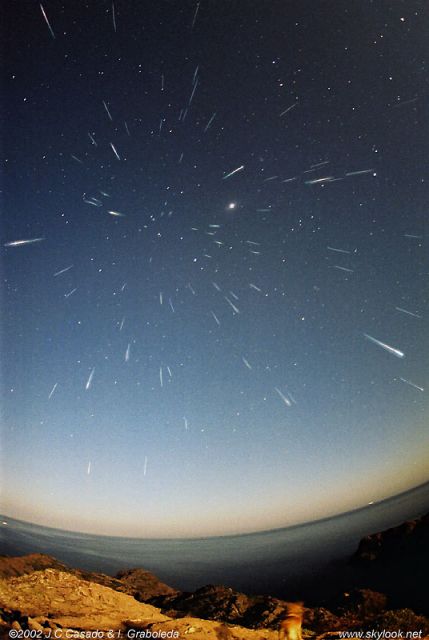
|
Credit & Copyright:
Juan Carlos Casado
and
Isabel Graboleda
Explanation:
This lovely view from
northern Spain,
at Cape Creus on
the easternmost point of the
Iberian
peninsula, looks
out across the Mediteranean and up
into the stream of the
2002 Leonid
meteor shower.
The picture is a composite of thirty separate one minute exposures
taken through a fisheye lens near the Leonids' first peak,
about 4:00 Universal Time on November 19.
Over 70 leonid meteors are visible
here, some seen nearly head on,
with bright Jupiter positioned just to the right of the
shower's radiant in Leo.
Perched on the moonlit
rocks at the bottom right,
the photographers' dog seems to be watching the on going
celestial display
and adds an interesting visual element to
the scene.
What's the dog's name? Leica, of course.
|
January February March April May June July August September October November December |
| ||||||||||||||||||||||||||||||||||||||||||||||||
NASA Web Site Statements, Warnings, and Disclaimers
NASA Official: Jay Norris. Specific rights apply.
A service of: LHEA at NASA / GSFC
& Michigan Tech. U.
Based on Astronomy Picture
Of the Day
Publications with keywords: Leonid meteor shower - Spain - Leonids
Publications with words: Leonid meteor shower - Spain - Leonids
See also:
